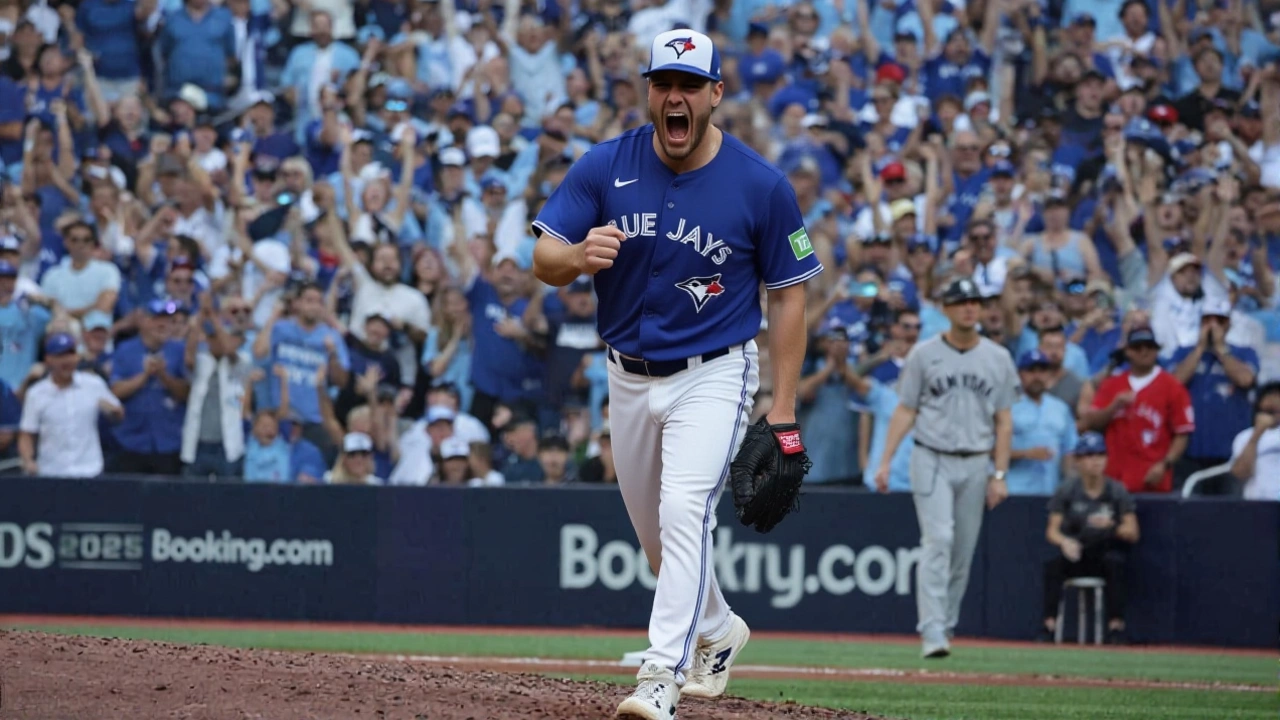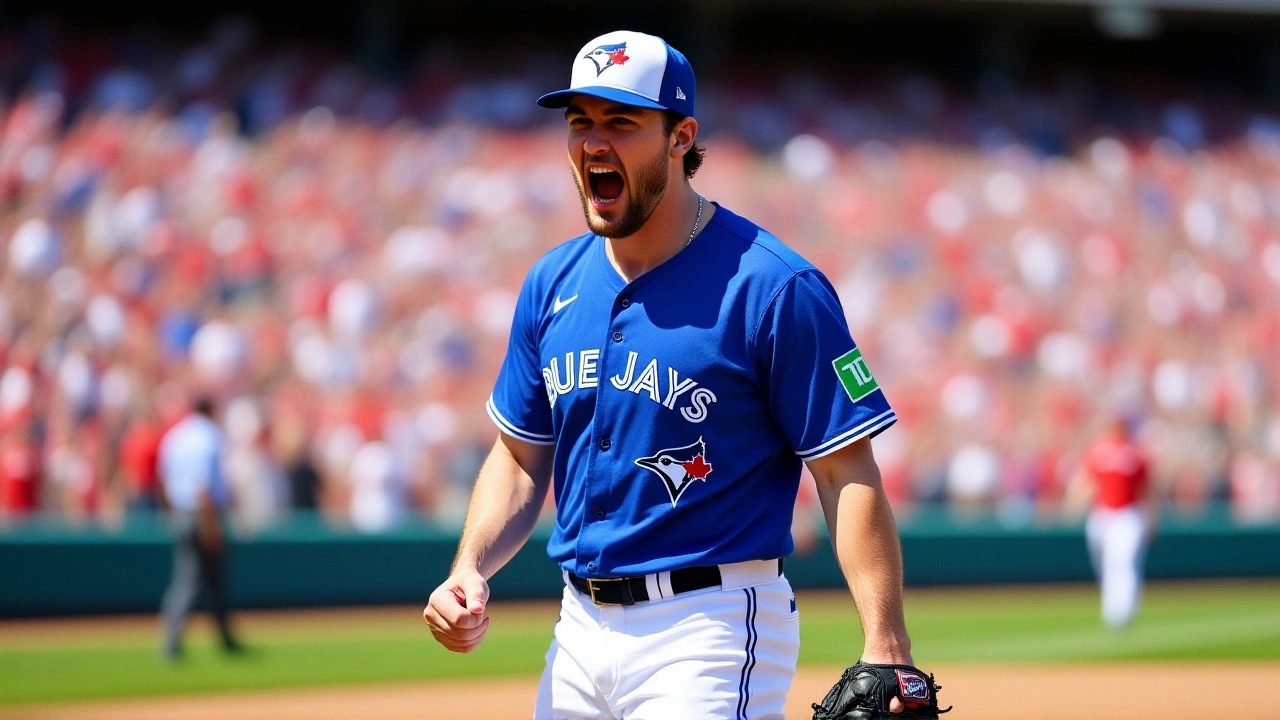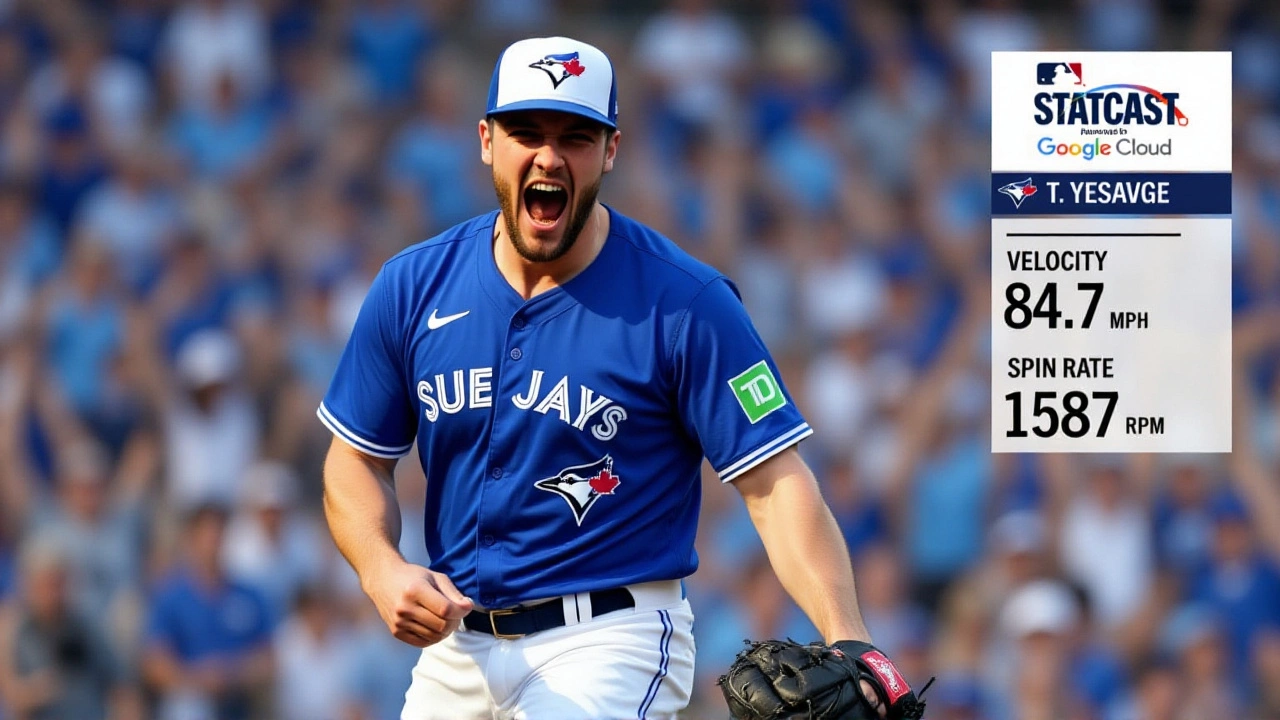Rookie Trey Yesavage sets Blue Jays ALDS strikeout record in Game 2 win
 Oct, 6 2025
Oct, 6 2025
When Trey Yesavage, the rookie right‑hander for the Toronto Blue Jays, struck out 11 New York Yankees batters in 5 1/3 no‑hit innings, the stadium erupted like a thunderstorm on October 5, 2025.
It happened during Game 2 of the American League Division SeriesRogers Centre in Toronto, where the Blue Jays beat the New York Yankees 13‑7, taking a 2‑0 series lead.
Background: A rivalry that’s turned into a showcase
The 2025 ALDS pitted two of baseball’s most storied franchises against each other, but the Yankees entered Toronto with a dubious record: they had lost eight of nine regular‑season games at Rogers Centre. The series format—2‑2‑1—means the first two games are crucial, and history shows that teams winning both home games march on 91.2 % of the time.
Fans expected a tight duel. Yet the Blue Jays fielded five Gold‑Glove–caliber defenders, including outfielder Myles Straw, who shuffled between right and left field to deny extra bases.
Yesavage's Record‑Breaking Performance
Yesavage entered the game with just three major‑league starts under his belt. His pre‑game scouting report was thin—scouts noted a “mysterious release point” but couldn’t pin down his off‑speed stuff. In the first inning alone, Yankees hitters fanned three times, a warning that would echo through the rest of the night.
By the fourth inning, Yesavage had already matched the franchise playoff high of eight strikeouts, a mark set by Juan Guzmán in the 1992 ALCS and later equaled by David Price in 2015. The next batter? Another whiff, pushing the total to nine. He didn’t stop there—two more strikeouts in the fifth sealed the 11‑K tally, eclipsing the prior record and cementing his place in Blue Jays lore.
Former Yankees pitcher Max Fried was pulled early, and reliever Will Warren never recovered after surrendering a fourth‑inning grand slam to Vladimir Guerrero Jr.. Yesavage’s splitter, described by broadcasters as “a knife‑edge split‑second between the zone and out of it,” simply wasn’t something the Yankees could decipher.
Offensive Firepower: Guerrero’s Grand Slam
When Guillermo – I mean Vladimir Guerrero Jr. stepped up in the fourth, the crowd held its breath. On a 1‑2 count, he launched a 417‑foot drive that cleared the left‑field wall, adding four runs and effectively putting the game out of reach. It was his second grand slam of the postseason, and the Yankees manager could only watch as the scoreboard swelled.
Guerrero’s blast paired with timely hits from George Springer and Bo Bichette, who each drove in two more runs. The Blue Jays’ offense turned a dominant pitching performance into a 13‑7 rout.

Yankees’ Response and Outlook
After the loss, New York faces a daunting climb: win three straight games, including a must‑win in Game 3 at Yankee Stadium, then clinch Games 4 and 5 on the road. Historically, only eight teams have rebounded from a 0‑2 home deficit since the 2‑2‑1 format debuted, the most recent being the 2017 Yankees themselves.
Sportswriter Ben Rice observed, “The Yankees are staring at the longest road in baseball history. Their only hope is to rally the bullpen and hope the offense clicks like it did in 2017.” Yet the Yankees’ bullpen, already rattled, will need to neutralize a Blue Jays lineup that’s still rolling.
Manager Aaron Boone promised aggressive base‑running and a “do‑or‑die” approach, but critics point out that the team’s offense struggled against left‑handed pitchers all season—something the Blue Jays can exploit.
What This Means for the ALCS Picture
If Toronto clinches Game 3, it will advance to the American League Championship Series with a single win remaining, a scenario not seen since the 2020 ALDS. The Blue Jays would become the first Canadian club to reach the ALCS in the modern era, a milestone that would electrify fans from Vancouver to Halifax.
Conversely, a Yankees comeback would rewrite the odds books. The statistical model that predicts a 91.2 % chance for home teams winning the first two games would be upended, and the narrative would shift from “Yesavage’s meteoric rise” to “New York’s historic resilience.”
Either way, the series has already produced one of the most memorable postseason outings in recent memory. As the teams pack up for the next battle at Yankee Stadium, fans on both sides will be watching not just for the outcome, but for the story that will define the 2025 postseason.

Key Takeaways
- Rookie Trey Yesavage set a Blue Jays playoff record with 11 strikeouts in 5 1/3 innings.
- Vladimir Guerrero Jr.’s fourth‑inning grand slam added four runs.
- Blue Jays lead series 2‑0; Yankees must win three straight to survive.
- Historical data: teams winning both home games advance 91.2 % of the time.
- Next game at Yankee Stadium could become one of the biggest comebacks—or a quick end.
Frequently Asked Questions
How does Yesavage’s performance affect his future with the Blue Jays?
The 11‑strikeout outing thrust Yesavage into the conversation for a permanent rotation spot. While his sample size is still small, the Blue Jays’ front office is likely to give him more starts, especially with the postseason spotlight highlighting his splitter and low‑walk rate.
What does the Yankees’ 0‑2 deficit mean statistically?
Historically, teams that lose the first two home games in a 2‑2‑1 ALDS format win the series only about 8.8 % of the time. A comeback would join a short list that includes the 2017 Yankees and the 2012 Royals.
Who were the key defensive players for Toronto in Game 2?
Five Gold‑Glove defenders took the field, highlighted by Myles Straw in the outfield, who robbed Cody Bellinger of extra bases with a leaping catch in left‑center. Infielders Bobby Dalbec and Cavan Mills also turned two crucial double plays.
What adjustments must the Yankees make in Game 3?
Aaron Boone will likely accelerate the tempo, using more pinch‑runners and left‑handed relievers to counter Yesavage’s split‑finger slider. Hitting coaches may also focus on shortening swings to handle the rookie’s late‑break pitch.
Could this series impact the Blue Jays’ chances in the upcoming ALCS?
A quick finish would give Toronto extra rest for its pitching staff, especially the bullpen that logged two innings in Game 2. However, it also adds pressure; a longer series could wear down arms but provide more momentum heading into the championship round.